17 Unique Destinations For Your Irish Getaway
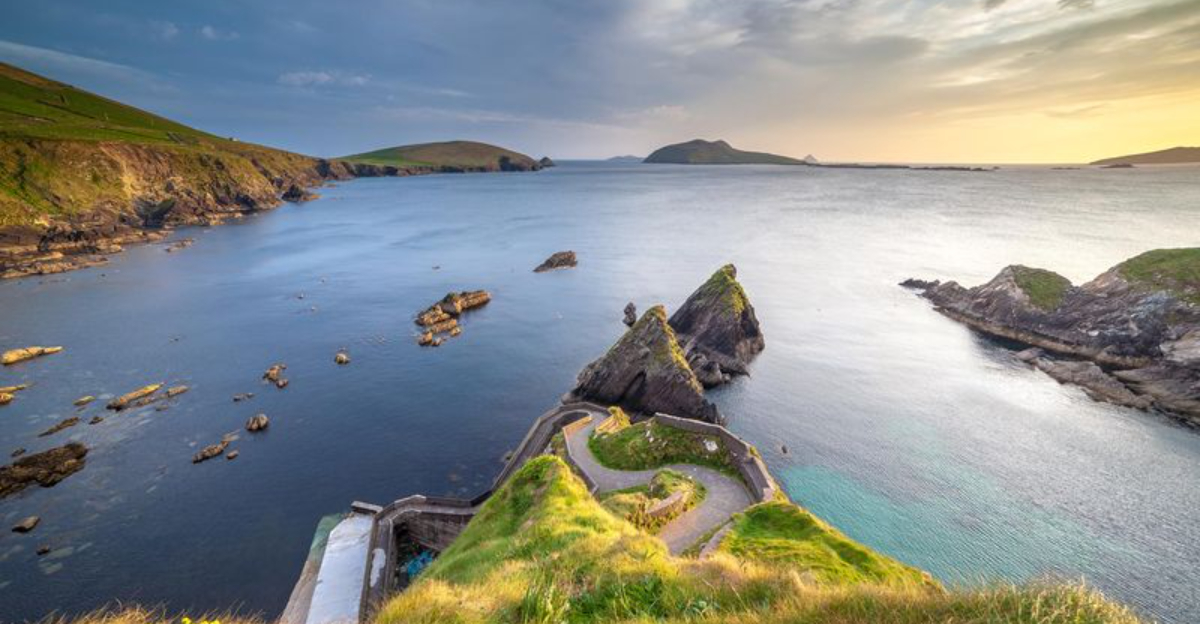
Ireland’s beauty goes far deeper than the Cliffs of Moher and Temple Bar. If you’re ready to step away from the tourist trail, you’ll find a country brimming with soul-stirring landscapes, forgotten ruins, and locals who’ll greet you like an old friend.
I’ve wandered through misty valleys, stumbled upon castle ruins with no one else around, and sipped tea in villages so quiet it felt like time paused. These experiences are the ones that stuck with me—and they’re exactly what you’ll find in these 17 magical spots that many travelers overlook.
So, are you ready to trade the crowds for cobblestone charm and windswept wonder? Let’s uncover the side of Ireland that truly feels like a storybook come to life.
1. The Skellig Islands: Ancient Monasteries at Sea
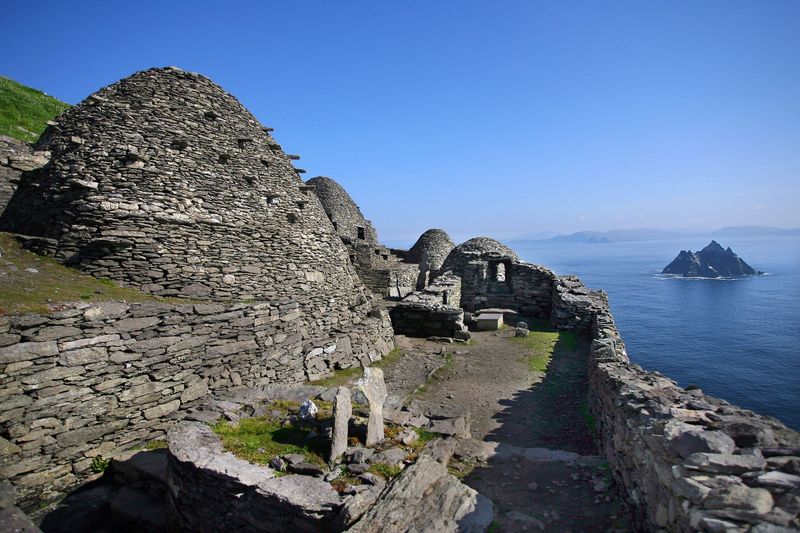
Rising dramatically from the Atlantic Ocean, these jagged rock formations house incredible sixth-century monastic ruins. Monks once climbed 600 hand-carved steps to reach their stone beehive huts, seeking isolation for spiritual devotion.
Did you know? Star Wars fans might recognize Skellig Michael as Luke Skywalker’s hideaway in recent films. The islands also host thousands of puffins during breeding season, creating a photographer’s paradise.
Boat tours operate from Portmagee between May and September, weather permitting. The journey itself feels like an adventure as waves crash against your vessel approaching these mystical peaks.
2. Glendalough: Valley of Two Lakes
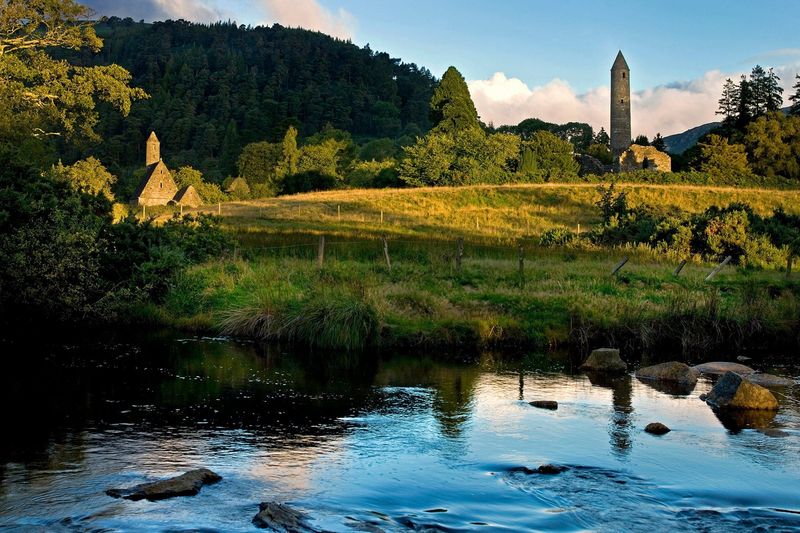
Nestled in the Wicklow Mountains, this ancient monastic settlement offers a perfect blend of history and natural beauty. Founded by St. Kevin in the 6th century, the valley contains remarkably preserved round towers, churches, and crosses scattered among breathtaking scenery.
Walking trails wind through forests alongside two peaceful lakes, ranging from easy strolls to challenging hikes. The Upper Lake’s boardwalk provides stunning views without demanding serious hiking boots.
Morning visits help you avoid crowds and catch magical mist rising from the water. Bring a picnic to enjoy beside ancient tombstones where monks once walked, creating your own peaceful connection to Ireland’s past.
3. The Burren: Lunar Landscape in Clare
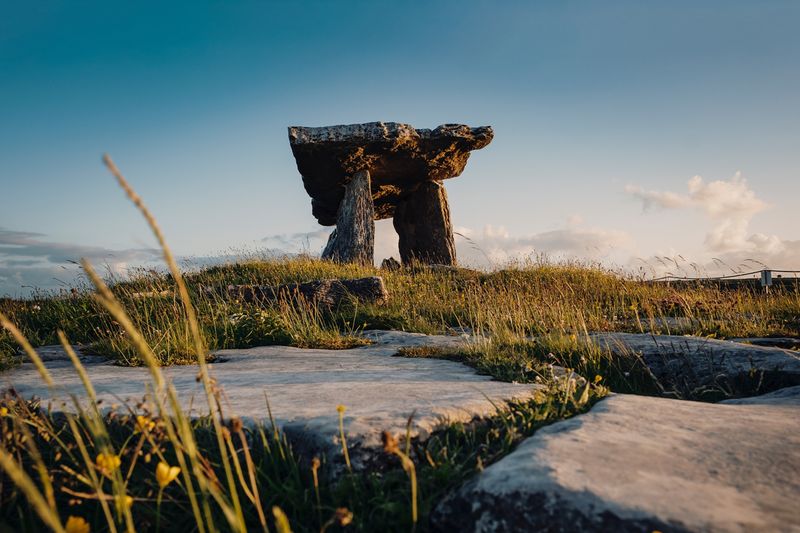
Unlike anywhere else in Ireland, this vast limestone plateau creates an otherworldly moonscape that seems transported from another planet. Massive gray stone slabs stretch for miles, cracked into patterns resembling giant puzzle pieces.
Strangely, this apparent wasteland harbors incredible biodiversity. Arctic, alpine, and Mediterranean plants somehow thrive side by side in rock crevices, creating a botanical anomaly scientists still study today.
Hidden among the rocks, you’ll discover ancient dolmens, ring forts, and stone circles dating back thousands of years. Visit in spring when wildflowers transform the gray landscape with unexpected bursts of color, creating a magical contrast against the stark stone.
4. Slieve League Cliffs: Europe’s Highest Sea Cliffs
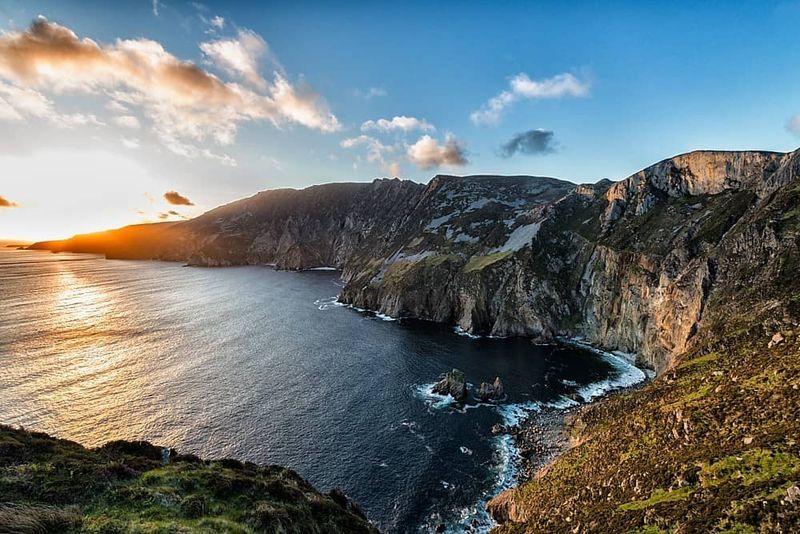
Towering nearly three times higher than the famous Cliffs of Moher, these magnificent sea cliffs in Donegal offer breathtaking views without the tourist crowds. Standing 1,998 feet above crashing Atlantic waves, the vertigo-inducing drops create an exhilarating experience for brave visitors.
A winding road leads to the main viewing area, but adventurous souls can hike the Pilgrim’s Path to the summit. Watch for dolphins playing in the waters below while hawks soar at eye level beside you.
Local fishermen sometimes offer boat tours viewing the cliffs from sea level – a completely different perspective highlighting their massive scale. Visit at sunset when the changing light transforms the colorful rock faces into a natural canvas of purples and golds.
5. Kinsale: Colorful Foodie Haven
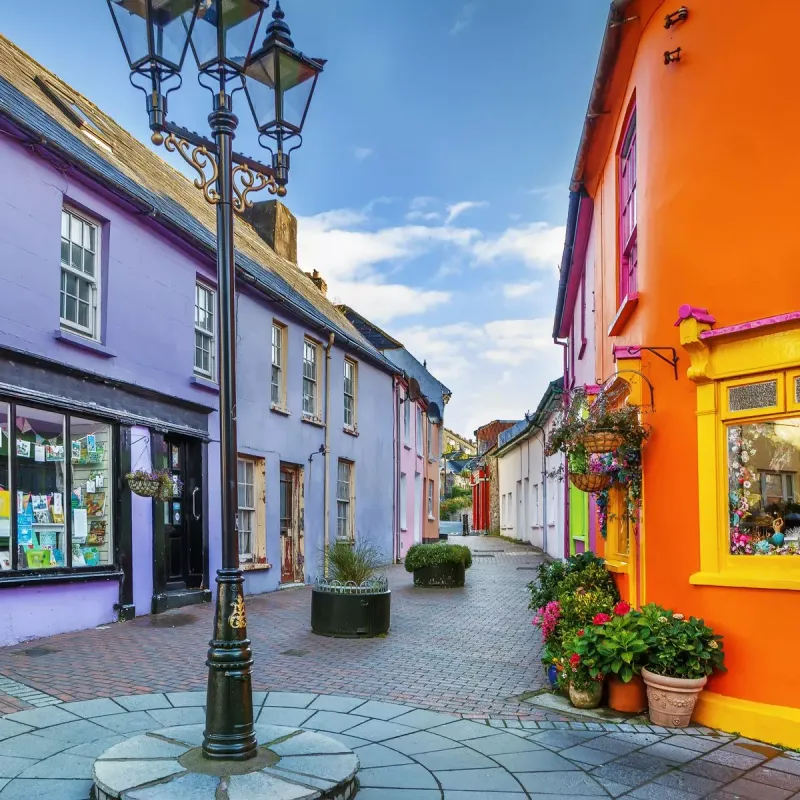
This charming harbor town explodes with color as rainbow-hued buildings line narrow, winding streets. Beyond its picture-perfect appearance, Kinsale has earned fame as Ireland’s culinary capital, packed with award-winning restaurants serving freshly caught seafood.
History buffs appreciate exploring Charles Fort, a massive star-shaped military fortress overlooking the harbor. Its strategic position tells tales of naval battles and sieges that shaped Ireland’s past.
If you visit in October, don’t miss the annual Gourmet Festival where local chefs showcase their talents. Spend evenings hopping between traditional pubs where friendly locals share stories over pints and impromptu music sessions often break out around cozy fireplaces.
6. Beara Peninsula: Ireland’s Wild Southwest
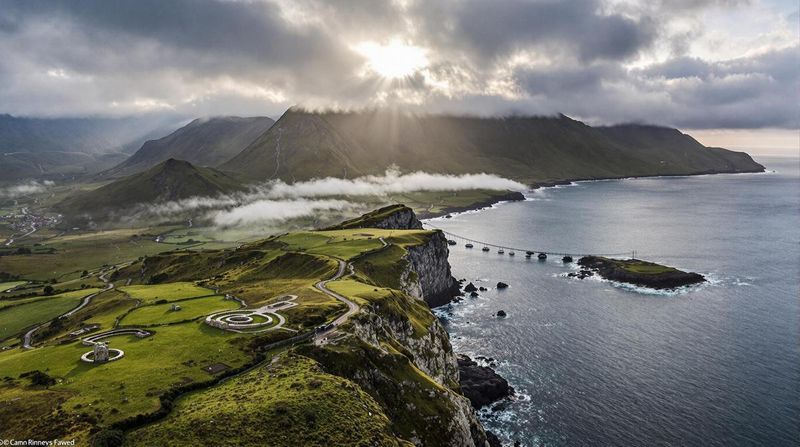
Less traveled than the famous Ring of Kerry, this rugged finger of land offers raw, unspoiled beauty without tour buses clogging narrow roads. Dramatic mountain passes open to sweeping ocean views as sheep roam freely across heather-covered hillsides.
The Healy Pass cuts through stunning scenery, providing hairpin turns and panoramic vistas that reward confident drivers. Along coastal roads, you’ll discover abandoned copper mines, stone circles, and fishing villages where life moves at an unhurried pace.
Take Ireland’s only cable car from Dursey Sound to Dursey Island, swinging precariously above crashing waves. This tiny island has no shops or pubs – just peaceful walking trails and the chance to spot whales and dolphins from its windswept cliffs.
7. Newgrange: Stone Age Marvel
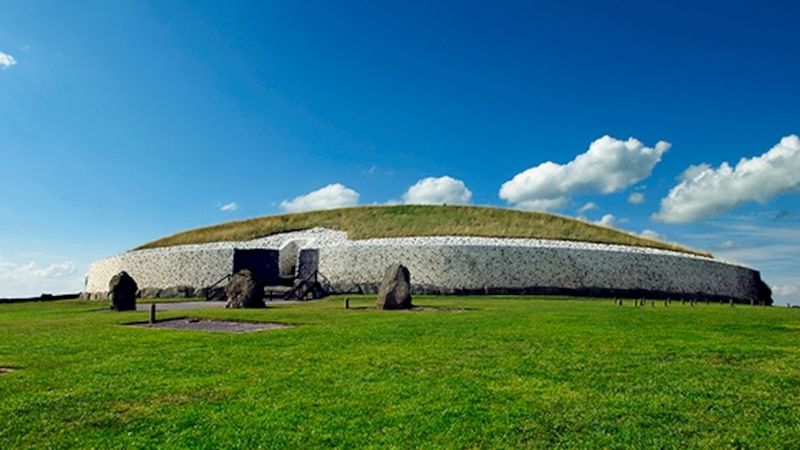
Older than Stonehenge and the Egyptian pyramids, this 5,200-year-old passage tomb represents one of humanity’s greatest engineering achievements. The massive mound covers an acre, surrounded by 97 carved kerbstones weighing up to 5 tons each.
What makes Newgrange truly special happens just once yearly. During winter solstice sunrise, a perfectly aligned roof-box allows sunlight to penetrate the darkened chamber, illuminating intricate spiral carvings in a breathtaking display of ancient astronomical knowledge.
Visitors must enter a lottery to witness this December event, but year-round tours still demonstrate the phenomenon using simulated light. Standing inside the central chamber, you’ll marvel at how Stone Age builders created a structure remaining perfectly waterproof after five millennia.
8. Achill Island: Atlantic Wilderness
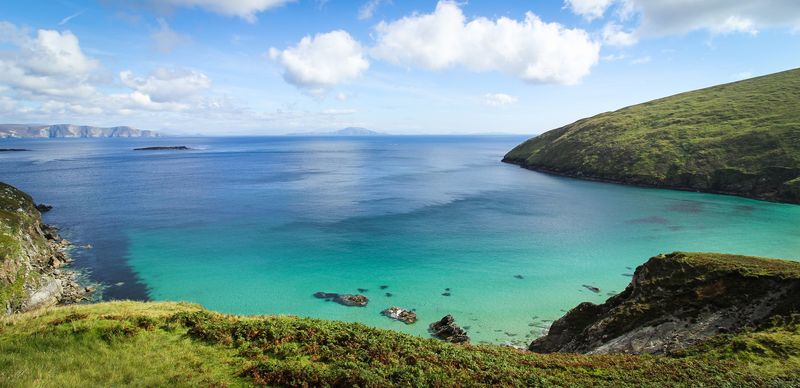
Connected to mainland Mayo by bridge, Ireland’s largest island delivers dramatic landscapes ranging from towering sea cliffs to pristine beaches with surprisingly Caribbean-blue waters. The Atlantic Drive winds along heart-stopping coastal roads offering views that change with each weather shift.
Keem Bay’s perfect horseshoe beach nestles between steep cliffs, creating one of Europe’s most beautiful swimming spots. Nearby, the haunting Deserted Village at Slievemore contains over 80 stone cottages abandoned during the Great Famine, creating a powerful reminder of Ireland’s painful past.
Adventure seekers find paradise here with world-class surfing, kiteboarding, and hiking opportunities. After active days, warm up in village pubs where traditional music sessions keep ancient tunes alive while Atlantic storms rattle windows.
9. Hook Peninsula: Lighthouse Legacy
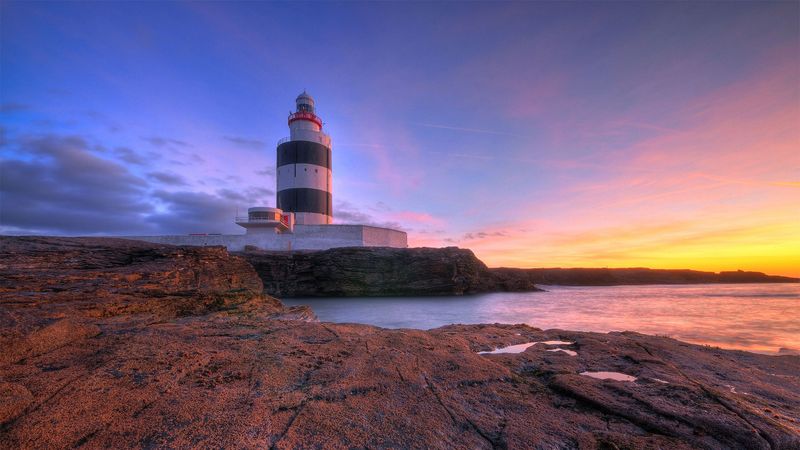
Jutting into the Celtic Sea from County Wexford, this often-overlooked peninsula houses the world’s oldest operational lighthouse. Built by monks in the 5th century and later converted to its current form in the 13th century, Hook Lighthouse has guided sailors safely for over 800 years.
Beyond the lighthouse, hidden coves reveal fossils in exposed rock layers while Loftus Hall stands as Ireland’s most haunted house. According to legend, the devil himself once visited this mansion, leaving behind supernatural activity that continues today.
Seafood restaurants serve fresh catches in tiny fishing villages along the peninsula. Try lobster pulled from traps you can see from your table while watching fishing boats return to harbor against spectacular sunset backdrops.
10. Connemara: Rugged Western Wilderness

Where mountains, lakes, and sea collide, Connemara creates Ireland’s most hauntingly beautiful landscape. Golden light filters through ever-changing cloud patterns, illuminating twelve mountain peaks known as the Twelve Bens that dominate the skyline.
Kylemore Abbey, a fairytale castle reflected in its lake, houses Benedictine nuns who fled Belgium during World War I. Their Victorian walled garden remains a masterpiece of horticultural design hidden within this wild setting.
The winding Sky Road near Clifden delivers panoramic Atlantic views that showcase why Oscar Wilde described Connemara as having “savage beauty.” Stop at Roundstone village where craftsmen still make bodhráns (traditional Irish drums) using ancient techniques passed through generations.
11. The Copper Coast: Geological Wonderland

Named for its 19th-century mining industry, this UNESCO Global Geopark stretches along Waterford’s coastline between Tramore and Dungarvan. Unlike Ireland’s more famous scenic routes, you’ll often have these spectacular views entirely to yourself.
Dramatic cliffs reveal 460 million years of Earth’s history in colorful rock layers visible to untrained eyes. Volcanic activity, desert conditions, and tropical seas all left their marks in these exposed formations.
Hidden coves with unusual red and green sand beaches offer peaceful retreats accessible only by narrow paths. Visit the Copper Coast Geopark Centre in Bunmahon to understand how to read the landscape before exploring abandoned mine buildings where workers once extracted valuable minerals from these ancient rocks.
12. Arranmore Island: Gaelic Culture Preserved
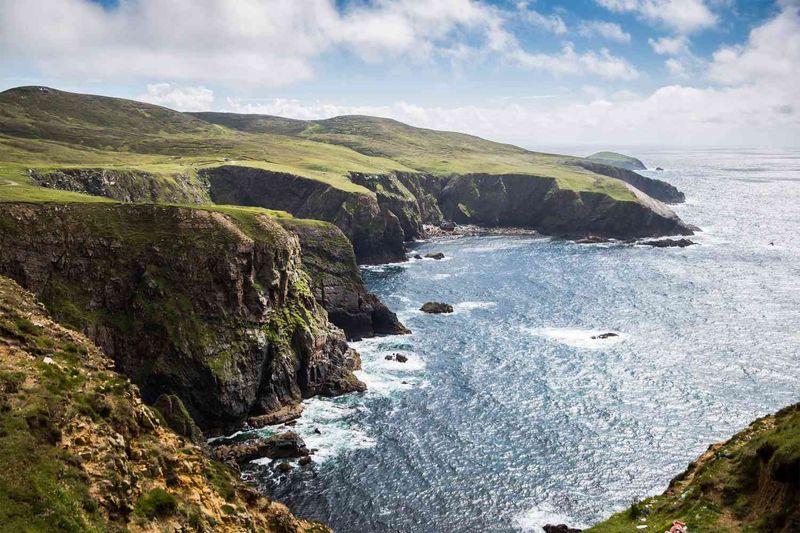
Just three miles off Donegal’s coast, this windswept island offers authentic Irish culture increasingly rare on the mainland. Gaelic remains the primary language, with traditional music, storytelling, and fishing forming the backbone of daily life.
Modern amenities mix surprisingly with ancient traditions – the island recently became Ireland’s first fully digital community with high-speed broadband. This technology allows younger generations to work remotely while maintaining their cultural heritage instead of emigrating.
Hiking trails cross dramatic landscapes where sheer cliffs drop to crashing Atlantic waves. Local fishermen often offer informal boat tours around smaller uninhabited islands where seals bask on rocks. Visit Glen Hotel’s pub where impromptu music sessions frequently continue until dawn, with locals welcoming visitors to join their celebrations.
13. Lough Gur: Prehistoric Ireland

This horseshoe-shaped lake in County Limerick harbors Ireland’s most important archaeological site, with human occupation spanning over 6,000 continuous years. Stone circles, megalithic tombs, and crannogs (artificial lake islands) reveal layers of prehistoric life rarely found in one location.
The Grange Stone Circle – Ireland’s largest – contains 113 stones precisely arranged to align with solstice sunrises. Nearby, ancient cooking sites and dwelling foundations tell stories of daily life long before written records.
Local legends claim the lake sometimes reveals glimpses of Tír na nÓg (Land of Eternal Youth) beneath its waters. Visit the excellent heritage center to understand the significance of what might otherwise look like simple stones and mounds scattered around this peaceful lake setting.
14. Dingle Peninsula: Dolphin’s Paradise
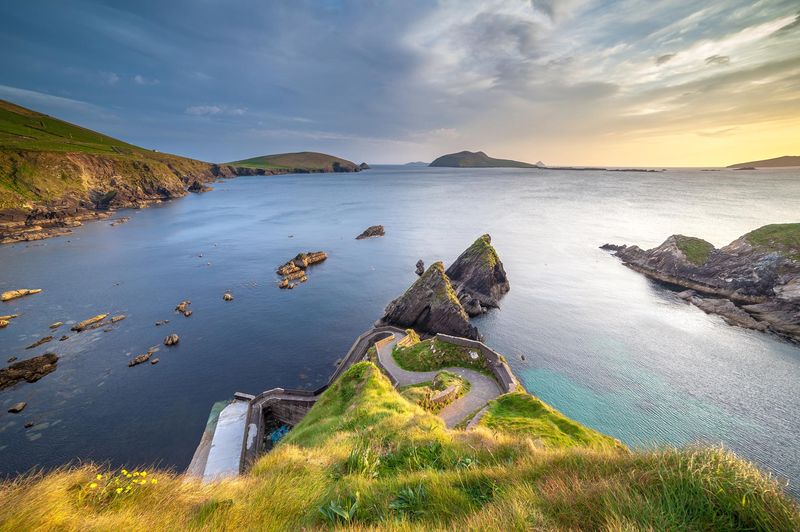
While tourists flock to nearby Ring of Kerry, this equally stunning peninsula offers similar views with fewer crowds. Ancient monuments dot the landscape – over 2,000 archaeological sites packed into this small area tell stories spanning 6,000 years.
Fungie, a friendly bottlenose dolphin, made Dingle Harbor his home for 37 years, becoming the town’s unofficial mascot before mysteriously disappearing in 2020. Though Fungie is gone, other dolphins frequently visit the harbor, maintaining the area’s special connection to these intelligent creatures.
Slea Head Drive winds around breathtaking coastal scenery featured in Star Wars and Ryan’s Daughter. Stop at Gallarus Oratory, a perfectly preserved early Christian church resembling an upturned boat, built without mortar yet remaining waterproof for over 1,200 years.
15. Birr Castle: Scientific Heritage
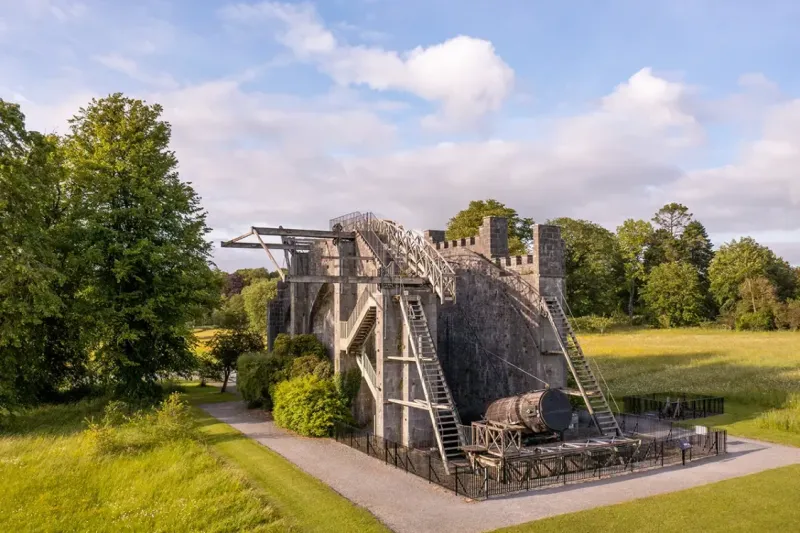
This medieval castle in Ireland’s midlands housed remarkable scientific achievements during the Victorian era. The 3rd Earl of Rosse built the world’s largest telescope here in 1845, discovering the spiral nature of galaxies decades before anyone else.
The telescope – nicknamed “Leviathan of Parsonstown” – has been fully restored and stands as an impressive engineering monument on the castle grounds. Surrounding it, Ireland’s largest formal gardens contain rare trees and plants collected over generations.
A science center explains the castle’s contributions to astronomy, photography, and engineering. Children love the treehouse adventure area featuring Ireland’s tallest treehouse and largest suspension bridge. Plan your visit during spring when thousands of flowering bulbs create spectacular displays throughout the historic gardens.
16. Carrick-a-Rede: Fishermen’s Rope Bridge
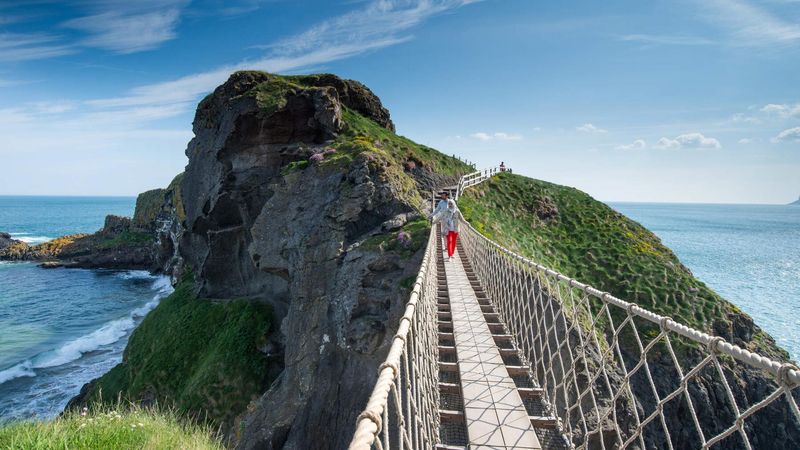
For over 350 years, brave salmon fishermen constructed a seasonal rope bridge to access prime fishing grounds from this tiny island off Northern Ireland’s coast. Today’s version, while safer than original designs, still creates heart-pounding excitement as it sways 100 feet above rocky waters.
The 65-foot crossing rewards courageous visitors with spectacular views of Rathlin Island and Scotland’s coast on clear days. Seabirds nest in surrounding cliffs, creating noisy colonies easily observed from designated viewing areas.
Though crossing the bridge draws most visitors, the surrounding coastal path offers equally impressive scenery for those preferring solid ground. Limestone caves below were formed during volcanic activity 60 million years ago – look for their distinctive formations visible from upper viewing platforms.
17. The Glen of Aherlow: Hidden Mountain Valley

Nestled between the Galtee Mountains and Slievenamuck Ridge, this peaceful valley remains one of Ireland’s best-kept secrets. Ancient woodlands filled with oak, ash, and hazel trees create magical walking trails where sunlight filters through leafy canopies onto carpets of wildflowers.
Sixteen mapped trails range from easy family strolls to challenging mountain hikes, each offering different perspectives of this stunning landscape. Look for the stone circle and holy well along Christ the King trail, where locals still leave offerings following traditions thousands of years old.
Small family farms dot the valley floor, producing excellent local cheeses and honey available at the weekly farmers’ market. Visit O’Brien’s Pub in Lisvernane village for traditional Irish stew made with locally raised lamb while chatting with friendly residents proud of their hidden paradise.
